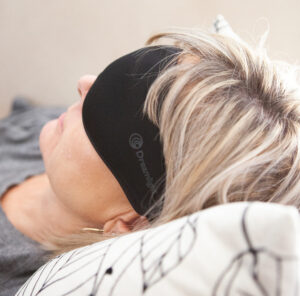FREE SHIPPING OVER $99
- Home
- Blog
- Sleep & Comfort
- How does shift work affect sleep patterns and how to overcome it

How does shift work affect sleep patterns and how to overcome it
About 1.5 million Australians are employed in shift work across a range of industries from health to hospitality and manufacturing to mining.1 That’s about 11% of our workforce, so it’s not insignificant.2
As humans, we’re not traditionally ‘programmed’ for shift work. Rather, our biological clock is expecting us to sleep when it’s dark and be wide awake when it’s daytime.3 In fact, we have specific hormones that are released to help make sure we follow that pattern, the most important of which is melatonin. If you’d like to know how melatonin works its magic, there’s an article here that will tell you more.
According to the Sleep Foundation of Australia, the average shift worker sleeps one hour a day less than non-shift workers. Some may sleep up to four hours less per day.3 And that can have serious implications.
Lack of sleep increases the risk of accidents at work and on the road and impairs performance. In fact, 17 hours without sleep is as dangerous as having a blood alcohol reading of 0.05.3
As well as fighting against the internal circadian body clock, being a shift worker also means battling light, noise, and temperature.
Light is particularly important because light shuts down your body’s production of melatonin, so nature’s sleeping aid, which normally kicks in around two hours before your (night-time) bedtime can’t help you the way it normally would.5
Noise is self-explanatory – it’s very difficult to sleep in a noisy environment.
But temperature is also important. Our body temperature decreases during sleep, and a cool (around 18oC) but not cold, room helps us you settle into and maintain sleep.6 In an Australian summer, a cool room during the day can sometimes be challenging.
Tips for improving sleep patterns for shift workers
In some ways, the advice is not too different to non-shift workers who have trouble sleeping, but we’ve added a couple of shift worker-specific tips too.
- Try and go to bed at the same time3
- Keep the bedroom cool and dark3 If you can’t block light, consider a light blocking mask, such as the Dreamlight masks. They’re comfortable and effective
- Avoid caffeine, alcohol, cigarettes, or other stimulants (like energy drinks) before going to bed3
- Sleep just before going to work if possible. This is better than earlier in the day. Or taking a nap before going to work might also help.3 Find out more about the right way to nap here.
- Make sure that you are not disturbed while sleeping. This may mean that others in your house need to be made aware of your need to sleep at unconventional times and keep their noise levels to a minimum during this time. A fan or white noise machine such as the Welcare Sleep-Tight Sleep Sound Machine can help to create a relaxing environment and down out any external distracting sounds.3
- Put your mobile phone on Do Not Disturb, or leave it in another room. If you’re concerned about missing any urgent calls, most smartphones allow you to let Favourites/Family through. If there is a landline in the bedroom, unplug it.
- Avoid devices – smartphone and tablet screens emit blue light that stimulate your brain7
- Use earplugs specifically designed for sleep. They’re usually more comfortable and have a noise suppression ratio that has been designed to block out unwanted noise but will still allow you to hear smoke detectors or fire alarms. Otifleks makes a great range of sleep earplugs. Check them out here.
Sources:
- https://news.csu.edu.au/latest-news/shift-work-statistics-to-get-the-heart-racing
- https://www.statista.com/statistics/795217/employment-in-australia/
- https://www.sleephealthfoundation.org.au/pdfs/Shiftwork-0815.pdf
- https://www.medicalnewstoday.com/articles/319918#1.-Manage-sleep-patterns
- https://www.sleepfoundation.org/melatonin
- https://www.healthline.com/health/sleep/best-temperature-to-sleep
- https://www.ncbi.nlm.nih.gov/pmc/articles/PMC7320888/
Tags
Leave a Comment Cancel reply
SUBSCRIBE
Subscribe to our mailing list so that you can be the first to know about new products and promotions.
© 2024. All Rights Reserved.







